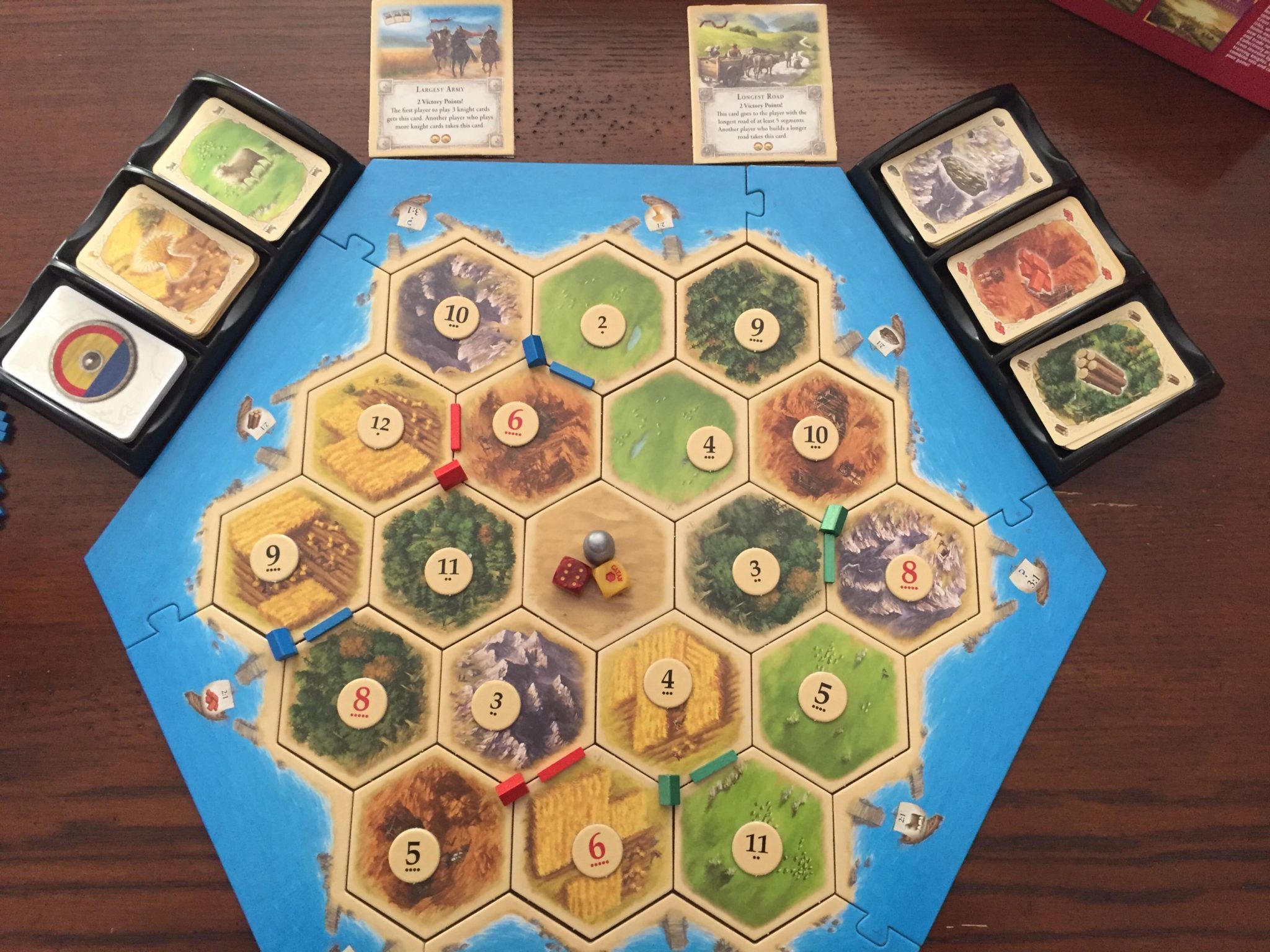

So to simplify our initial fairness problem, and get a good understanding of how the playing order affects the chances of winning, let’s start by a simplified version of the fairness problem: When playing Catan, the type of resource cards you get is important, but no more than the rate at which you receive them! Getting less optimal resources can slow down your development, but since you can exchange them against other resources type, it certainly beats receiving no cards! Note: For my analysis, I decided to consider 4 player games, since there is more competition for good spots on the board. What about the second and third players? Is the game fair for them, or do they lose on both count? Is the advantage of choosing first outweigh the advantages of being sure of what we start the game with? The last player can be sure of the resource mix they will start the game with, and for which settlement they will receive cards at the beginning.

The first player has the most options for the first settlement but may end up being blocked or left with poor choices for the second settlement.This way of playing directly translate in the following: The second settlement-road placement plays similarly but in reverse player order, the players also collect one resource card per tile surrounding this second settlement.Įxample of initial player settlement selection What is a truly fair (or unfair) board, however, is not easy to determine… The initial game setupĪt the start of the game, playing one after the other, the players put one settlement on the island with an attached road segment.

Right away, I will make an important distinction.Ī balanced Catan board is a board where resources and probabilities are equally distributed on the board and the probabilities equally distributed among resources.Ī fair Catan board is a board where all players have an equal chance of selecting good starting positions, no matter in which order they play, consequently offering them similar chances to win the game. This should offer a way to predict, or measure, which boards are fair or unfair, and see if we can modify the Catan island balance index to add an element of fairness to it! Are some initial board setups unfair? We will have a look at balanced and unbalanced Catan boards to see how they are related to a fair board.I will add resources and harbors considerations to the mix.I will then add a few strategic considerations to see if the benefits vary according to player play styles.By considering only the expected card return, we should be able to clearly see if there is an expected payout advantage in playing first.In today’s post, I will start by examining a simplified version of the fairness problem: So I will examine if the order of play benefits some players over the others, depending on the initial board setup.ĭoes being the first player in Catan offers a real game advantage? The goal here is to try to understand what makes a board fair. Those are the questions I’ll try to answer now. Are “balanced boards” also “fair boards”?.Are some setups unfairly advantageous to some players?.But I did not answer some important questions:


 0 kommentar(er)
0 kommentar(er)
